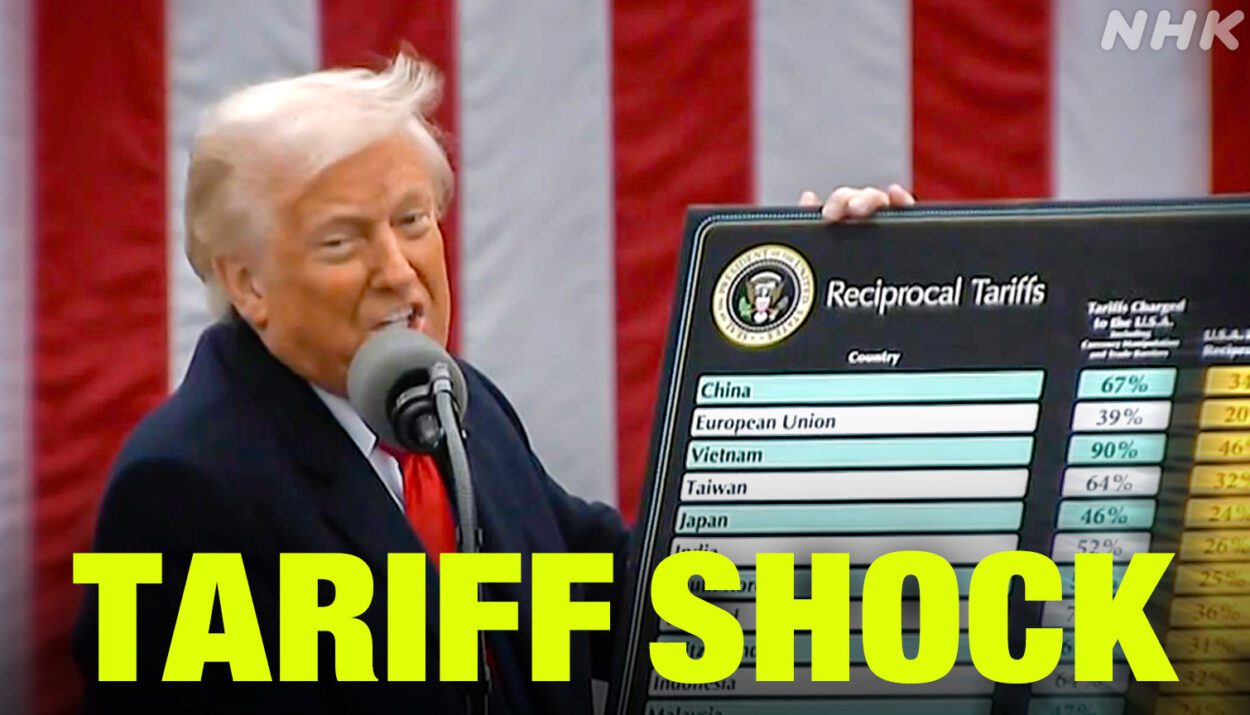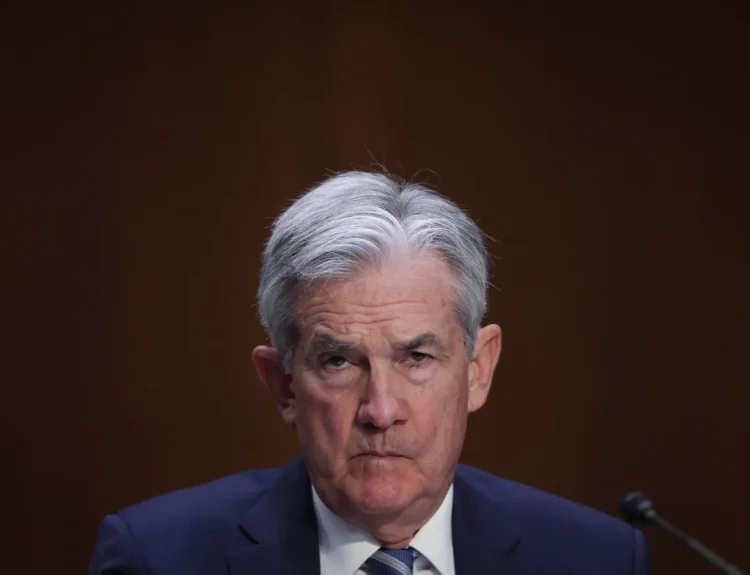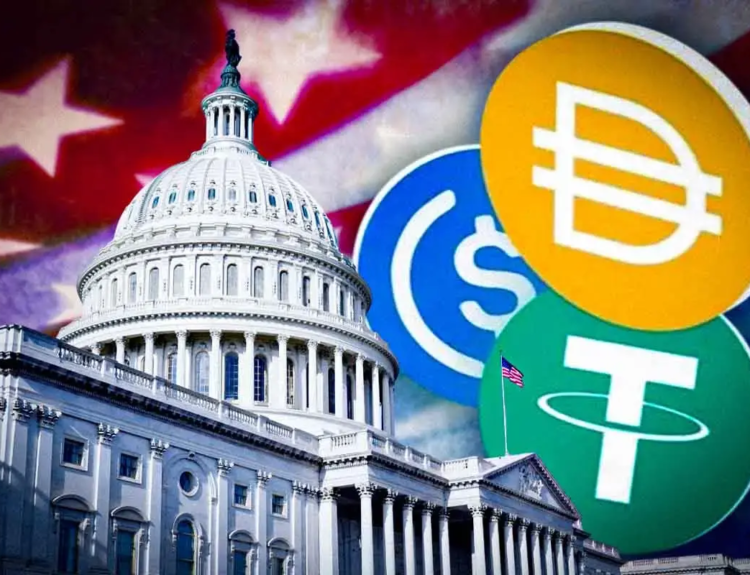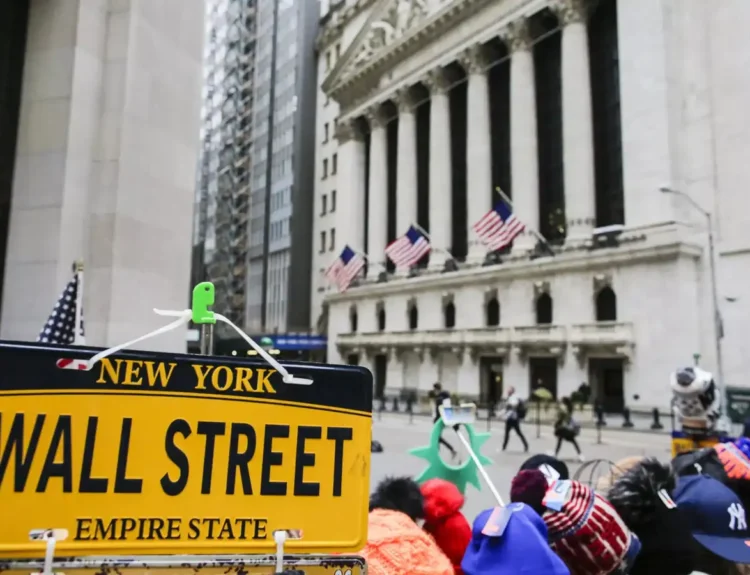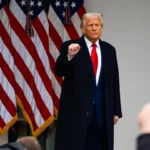In the aftermath of President Trump’s sweeping tariff rollout, Wall Street analysts are scrambling to revise their economic forecasts as concerns mount about inflation, growth, and global retaliation. What began as a bold political move to rebalance trade has rapidly become a central focus for economists, strategists, and policymakers, many of whom are now warning that the consequences could be deeper and more destabilizing than initially expected.
On paper, the tariff program aims to generate nearly $400 billion in revenue — roughly 1.3% of U.S. GDP — making it the single largest tax increase since the Revenue Act of 1968. But beyond the headline number, the financial world is increasingly focused on what comes next.
JPMorgan: This Is the Largest Tax Shock in Nearly 60 Years
JPMorgan’s research team described the tariff package as a “historic tax shock,” estimating that the new levies will push core inflation higher by 1% to 1.5% this year, with most of the price pressure likely to appear during the middle quarters. The firm also warned that these inflationary effects could drag real disposable income into negative territory, causing a slowdown in consumer spending precisely when the economy needs support.
“This impact alone could take the economy perilously close to slipping into recession,” analysts wrote.
And that’s before considering potential retaliation from global trade partners, or the chilling effect these measures may have on private sector investment.
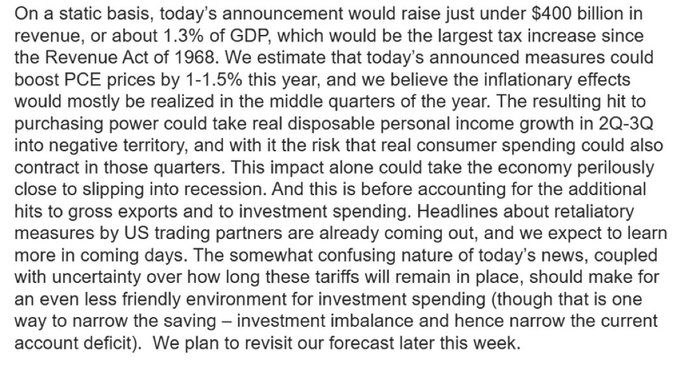
Morgan Stanley Scraps June Rate Cut Call
Following the announcement, Morgan Stanley became the first major Wall Street bank to pull its forecast for a June interest rate cut by the Federal Reserve. The bank now believes that the Fed will have little room to ease monetary policy in 2025, citing “tariff-induced inflation” as a reason to remain cautious. Instead of a mid-year cut, Morgan Stanley now expects the first potential easing to occur in March 2026, unless inflation unexpectedly falls back to pre-2023 levels.
Fitch: U.S. Tariff Rate Now Highest Since 1910
Fitch Ratings’ Olu Sonola called the tariff plan a “game changer,” noting that the average effective U.S. tariff rate has now jumped to around 22%, the highest seen since the early 20th century. Sonola warned that if these measures remain in place for more than a few quarters, most economic forecasts will need to be thrown out, as traditional models are not equipped to handle such a rapid policy shift.
“This is not just about trade — it reshapes the investment environment and could push multiple economies into recession if the ripple effects intensify.”
More Voices Join In: UBS, Barclays, Moody’s
Analysts at UBS believe that if the full tariff package is made permanent, core inflation in the U.S. could spike to 5%, even without a further escalation in trade disputes. This, in turn, would create a challenging environment for risk assets and consumer-focused sectors.
Meanwhile, Barclays’ Ajay Rajadhyaksha described the recent auto tariff announcement as “a statement of intent” and warned that April 2’s Liberation Day tariffs are more serious than markets are pricing in. At Moody’s Analytics, chief economist Mark Zandi now sees the chance of a U.S. recession within 12 months at 60%, up from 30% just weeks ago.
Downstream Pressure on Emerging Markets and Investment Flows
JPMorgan also downgraded emerging market currencies to “underweight” across its global allocation models, citing not only weaker trade flows but also the knock-on effects of a slower U.S. economy. Analysts expect a broad reallocation away from EM assets, which typically underperform during stagflationary conditions and periods of global uncertainty.
The Macro Math: Inflation Up, Growth Down
| Metric | Pre-Tariff Baseline | New Forecast (Avg) |
|---|---|---|
| U.S. Inflation (2025 avg) | 2.7% | 4.5–5.0% |
| GDP Growth (2025, real) | 2.1% | 0.5–1.2% |
| Fed Rate Cut (Timing) | June 2025 | March 2026 |
| Recession Risk (12 months) | 30% | 60% |
| Tariff Revenue (2025 est.) | — | $390–$400 billion |
Trump’s announcement may have energized his political base, but economists across Wall Street now fear that the policy may strain real incomes, delay monetary easing, and spark retaliation at a time when global growth is already fragile. While the president claims the tariffs are a path to American prosperity, the data is beginning to paint a much more uncertain picture.
Whether this strategy ultimately revitalizes domestic industry — or accelerates a broader downturn — remains one of the most important macro questions of the year.
Disclosure: This article does not represent investment advice. The content and materials featured on this page are for educational purposes only.
Related: Trump Announces Tiered Tariffs on China, EU, India, Others — “This Is Just the Start”
‘No Winner In A Trade War’: China, EU And Others React To Trump’s Reciprocal Tariffs


